Physical Address
304 North Cardinal St.
Dorchester Center, MA 02124
Hirschsprung disease (HD), also known as “congenital megacolon,” is characterized by the absence of ganglion cells in the myenteric and submucosal plexuses of the intestine. The first known description of this condition was by ancient Hindu surgeons in the Shushruta Samheta, and the first descriptions in the modern medical literature were from the 17th century. In 1887, Harald Hirschsprung, a pediatrician from Copenhagen, described two cases of the condition that ultimately bore his name. At that time, most children with congenital megacolon died from malnutrition and enterocolitis. As the underlying pathologic basis of the disease was unknown, surgeons removed the massively dilated proximal bowel and created a colostomy. Attempts at reanastomosis were uniformly unsuccessful.
Although the absence of ganglion cells in the distal colon of a child with HD was first noted by Tittel in 1901 and subsequent publications repeated this observation, it took many decades for clinicians caring for these children to become aware of this observation. The first recognition of aganglionosis by a surgeon as the cause of congenital megacolon was by Ehrenpreis in 1946. This was followed in 1949 by Swenson’s first description of a reconstructive operation for HD. Although Swenson’s operation was originally performed without a colostomy, technical difficulties in small infants, and the debilitated and malnourished state in which many children presented, were reasons most surgeons adopted a multistaged approach with colostomy as the initial step. In recent years, improvements in operative technique and earlier diagnosis have resulted in an evolution toward one-stage and minimal access procedures. These advances have resulted in significantly improved morbidity and mortality in infants with HD.
HD occurs in approximately 1 in 5000 live births. Approximately 80% of children have a “transition zone” in the rectum or rectosigmoid colon. Another 10% have more proximal colonic involvement, and about 5–10% have total colonic aganglionosis with variable involvement of the distal small intestine. Rarely, babies are afflicted with near-total intestinal aganglionosis.
A number of syndromes are associated with HD including trisomy 21, congenital central hypoventilation syndrome, Goldberg–Shprintzen syndrome, Smith–Lemli–Opitz syndrome, neurofibromatosis, and neuroblastoma ( Box 34.1 ).
Down syndrome (trisomy 21)
Neurocristopathy syndromes
Waardenberg–Shah syndrome
Yemenite deaf-blind-hypopigmentation
Piebaldism
Other hypopigmentation syndromes
Goldberg–Shprintzen syndrome
Smith–Lemli–Opitz syndrome
Multiple endocrine neoplasia 2
Congenital central hypoventilation syndrome (Ondine’s curse)
Isolated congenital anomalies
Congenital heart disease
Malrotation
Urinary tract anomalies
Central nervous system anomalies
Other
Ganglion cells are derived from the neural crest. By 13 weeks postconception, the neural crest cells have migrated from proximal to distal through the gastrointestinal tract, after which they differentiate into mature ganglion cells. There are two main theories why this process is disturbed in children with HD. The first possibility is that the neural crest cells never reach the distal intestine due to early maturation or differentiation into ganglion cells. Data supporting this theory come from animal models showing spontaneous aganglionosis and from studies of normal neural crest cell migration performed in chick embryos and human fetuses. The second possibility is that the neural crest cells reach their destination, but fail to survive or differentiate into ganglion cells due to an inhospitable microenvironment. It is likely that HD is actually a heterogeneous group of diseases with multiple genetic causes and etiologies.
A genetic basis for HD has long been suspected because of the presence of a family history in many cases and the known association with trisomy 21 and other genetically based conditions. Over the past two decades, an increasing number of researchers have made significant progress in identifying and elucidating the complex array of genetic mutations and mechanisms responsible for this disease. The first and most common gene to be identified is the RET proto-oncogene, which encodes a tyrosine kinase receptor. Many mutations of this gene and related genes, such as neurturin and glial cell line-derived neurotrophic factor ( GDNF ), have been described. It remains unclear how these mutations result in aganglionosis, but there is evidence that early neuronal cell death may be a prominent mechanism. RET abnormalities are most commonly found in patients with familial and long-segment involvement. Mutations in the endothelin family of genes, particularly endothelin-3 and the endothelin-B receptor, are also commonly associated with HD. Many of these children have other neurocristopathies such as dysfunction of melanocytes, congenital deafness, central hypoventilation, and neuroblastoma. From animal models, there is evidence that mutations in the endothelin and SOX-10 genes may produce early maturation or differentiation of neural crest cells, which decreases the number of available progenitor cells and prevents the neural crest cells from migrating any further. Other genes associated with HD include S1P1 (now known as ZFHX1B ), Phox2B , and the Hedgehog–Notch complex.
Prenatal diagnosis of HD is rare and is usually due to total colonic disease resulting in ultrasound (US) findings of fetal intestinal obstruction. Most affected patients present during the neonatal period with abdominal distension, bilious vomiting, and feeding intolerance. Delayed passage of meconium beyond the first 24 hours is present in approximately 90%. Occasionally, cecal or appendiceal perforation may be the initial event. Plain radiographs characteristically show dilated bowel loops throughout the abdomen. The next step is a water-soluble contrast enema. The pathognomonic finding of HD is a transition zone between the normal and aganglionic bowel ( Fig. 34.1 ). In children with rectosigmoid disease, this finding is best seen on the lateral view. Absence of a radiographic transition zone does not rule out HD, however, as approximately 10% of neonates with HD may not have a demonstrable transition zone. Occasionally, false-positive studies occur. It is also important to obtain a plain radiograph 24 hours later. Retention of the contrast is very suggestive for HD ( Fig. 34.2 ). The contrast study should be done using a water-soluble material rather than barium, as the enema potentially may be a definitive treatment for other conditions in the differential diagnosis, such as meconium ileus and meconium plug syndrome. Once the diagnosis of HD is suspected, it must be confirmed by rectal biopsy, which in the neonate can be done at the bedside without sedation.
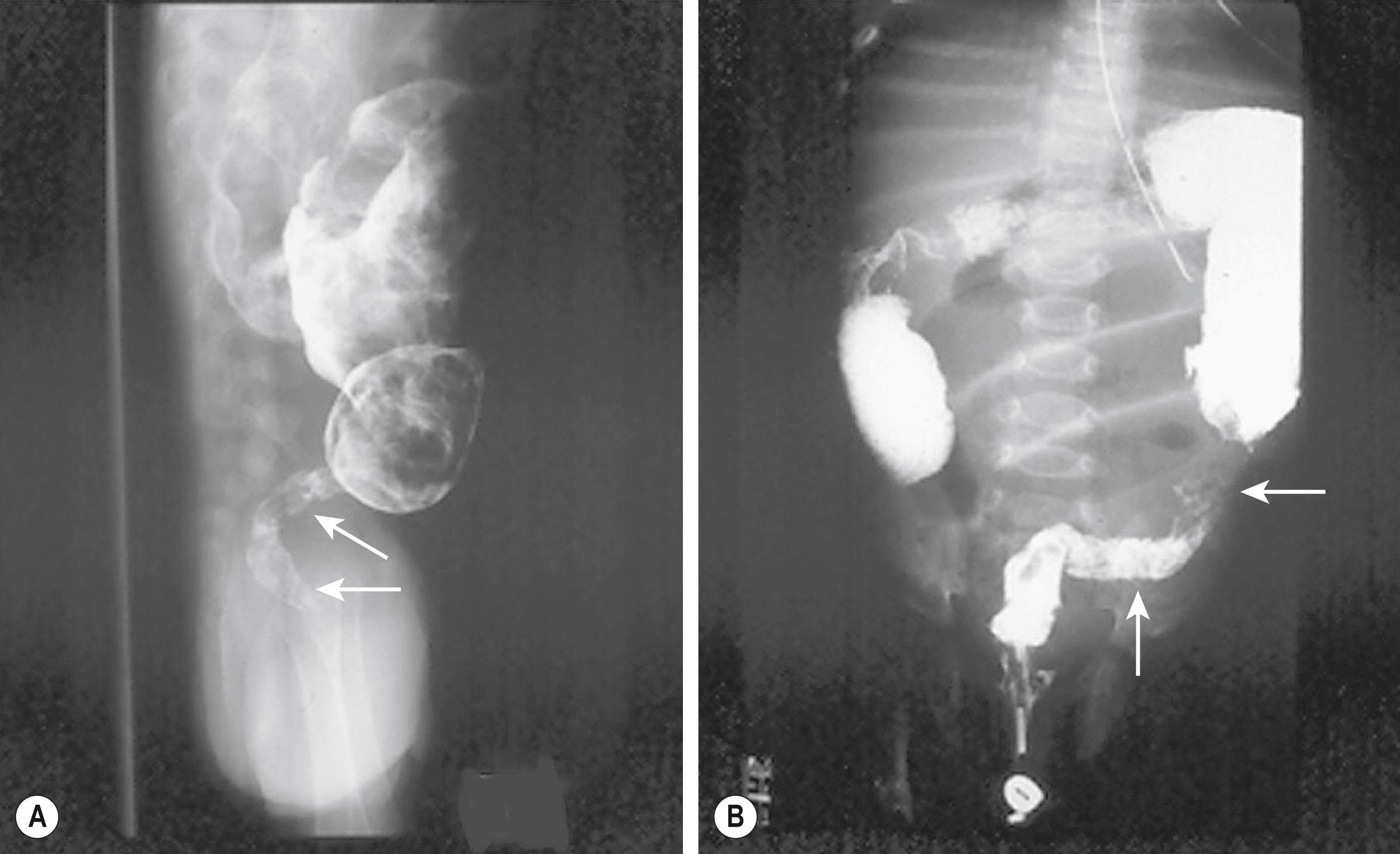
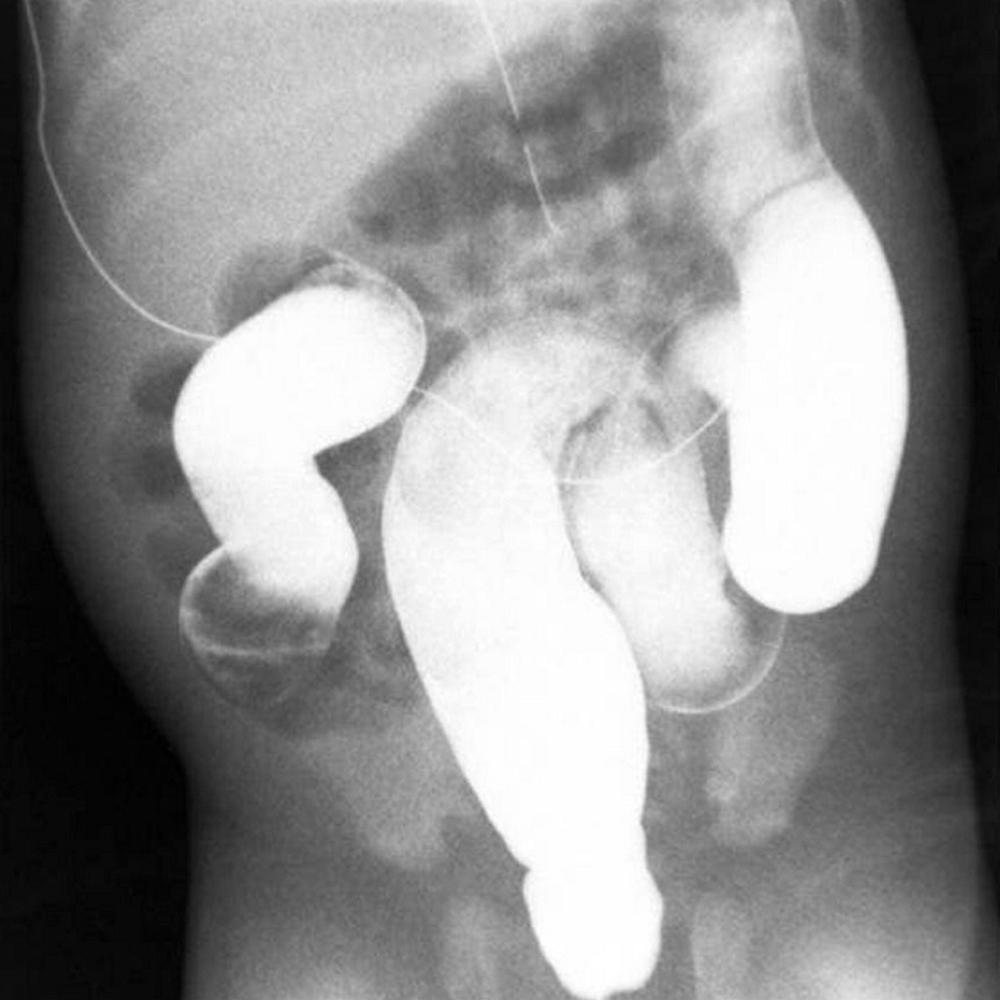
Patients presenting later in childhood have severe chronic constipation. As constipation is common in children, it can be difficult to differentiate HD from the more common causes. Clinical features pointing to the diagnosis include delayed passage of meconium at birth, failure to thrive, abdominal distention, and dependence on enemas without significant encopresis. Although a contrast enema usually demonstrates a transition zone in older children, a false-negative study may be due to massive rectal distension in combination with a very short aganglionic segment. Reversal of the usual rectosigmoid ratio and retention of contrast on a 24-hour postevacuation film also support the diagnosis. Anorectal manometry is another useful screening technique, in which the presence of a recto-anal inhibitory reflex (RAIR), consisting of reflex relaxation of the internal anal sphincter in response to balloon distension of the rectum, essentially rules out HD ( Fig. 34.3 ). As suction rectal biopsies are less reliable in older children due to sampling error, and a full-thickness biopsy under general anesthesia is therefore necessary, performing anorectal manometry may be a better first step in the diagnostic pathway for these children. Presence of a clear RAIR in this situation excludes HD, but absence of a RAIR may represent a false-positive test, and should be followed by a rectal biopsy.
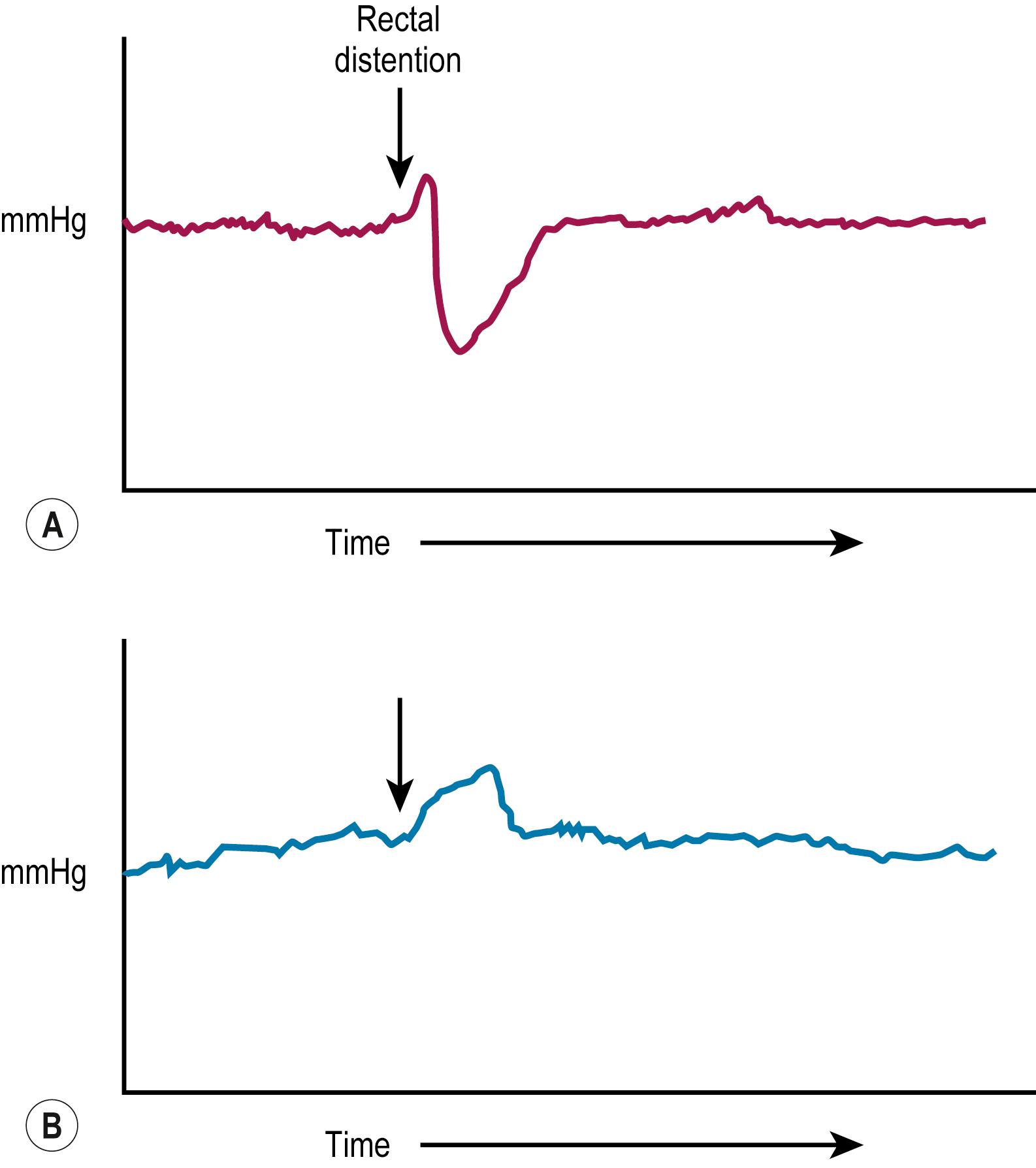
Approximately 10% of neonates with HD present with fever, abdominal distention, and diarrhea due to Hirschsprung-associated enterocolitis (HAEC), which can be life-threatening. Since HD characteristically causes constipation rather than diarrhea, this presentation may be confusing and the diagnosis of HD may not be considered. A careful history, including a history of delayed passage of meconium and intermittent stooling, should lead to an investigation for HD.
The gold standard for the diagnosis is the absence of ganglion cells in the submucosal and myenteric plexuses on histologic examination ( Fig. 34.4A ). Most patients will also have evidence of hypertrophied nerve trunks ( Fig. 34.4B ), although this finding is not always present, particularly in children with total colonic disease or a very short aganglionic segment. As there is normally a paucity of ganglion cells in the area 0.5–1.0 cm above the dentate line, the rectal biopsy should be taken ≥1.0–1.5 cm above it. However, a biopsy too proximal may miss a short aganglionic segment. In addition to hematoxylin and eosin, many pathologists also stain for acetylcholinesterase, which has a characteristic pattern in the submucosa and mucosa in children with HD ( Fig. 34.5 ), and for calretinin, which is almost always absent in patients with HD ( Fig. 34.6 ). Figure 34.7 shows our pathologic algorithm for rectal biopsies in children with suspected HD.
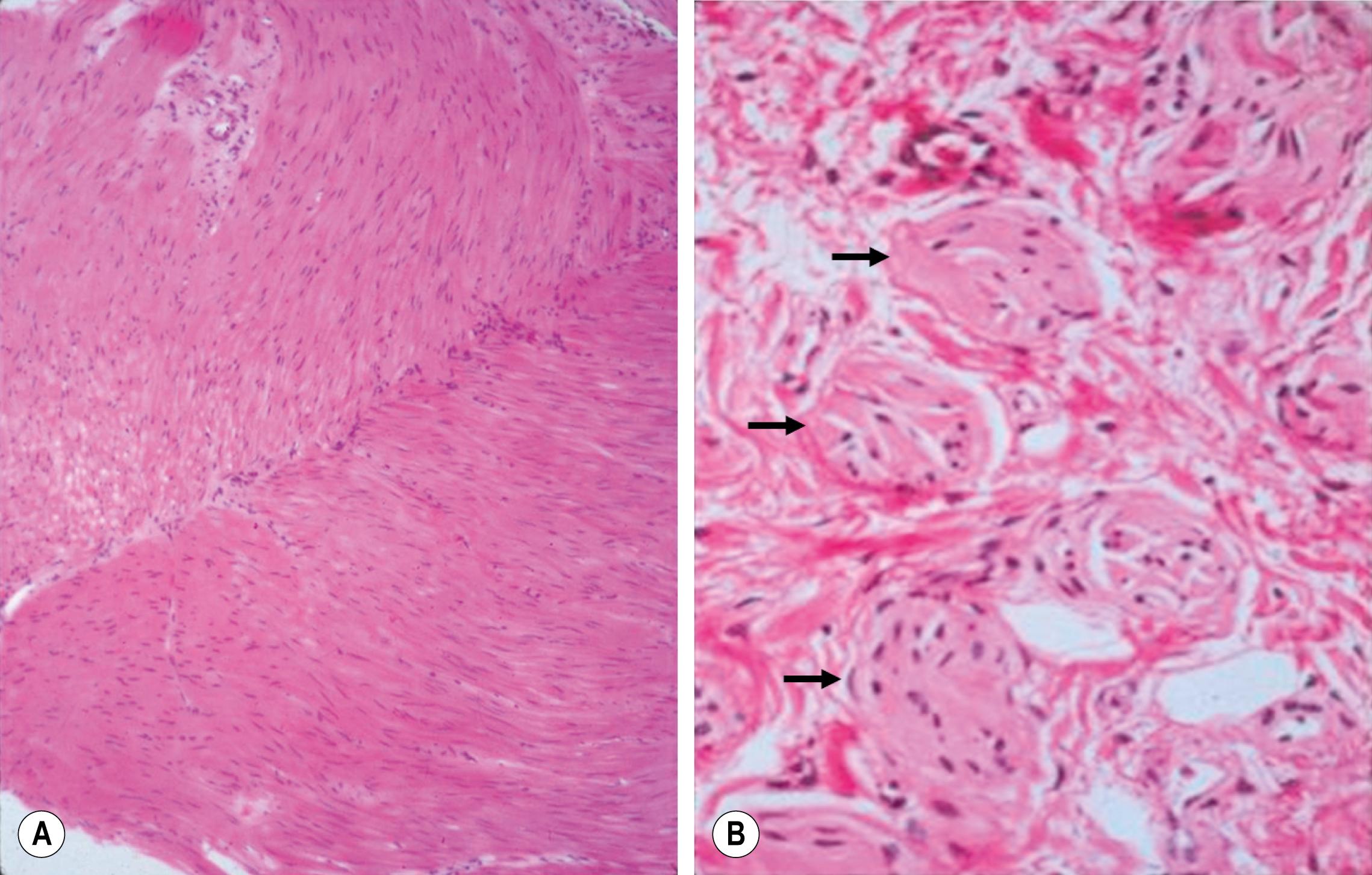
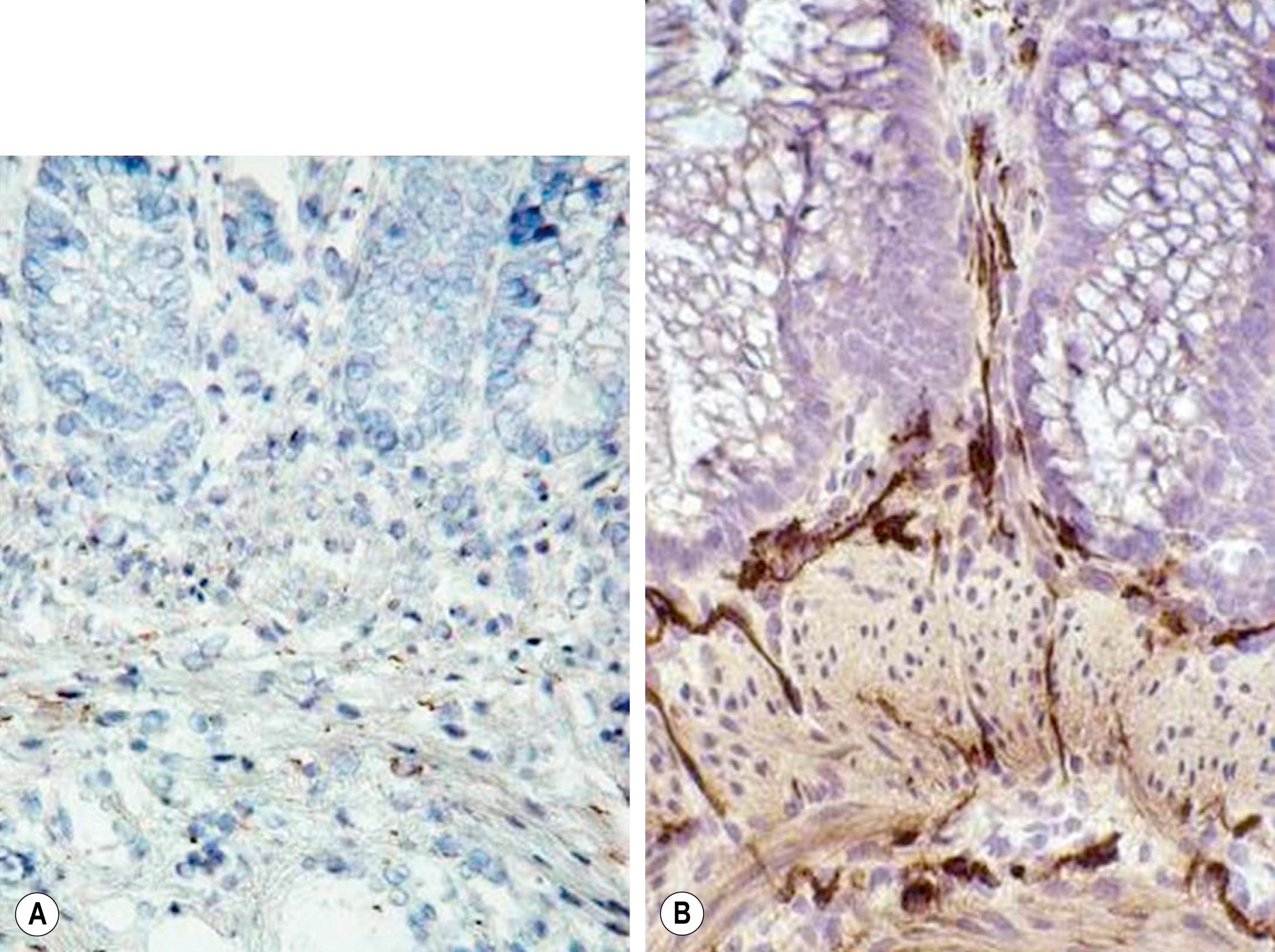
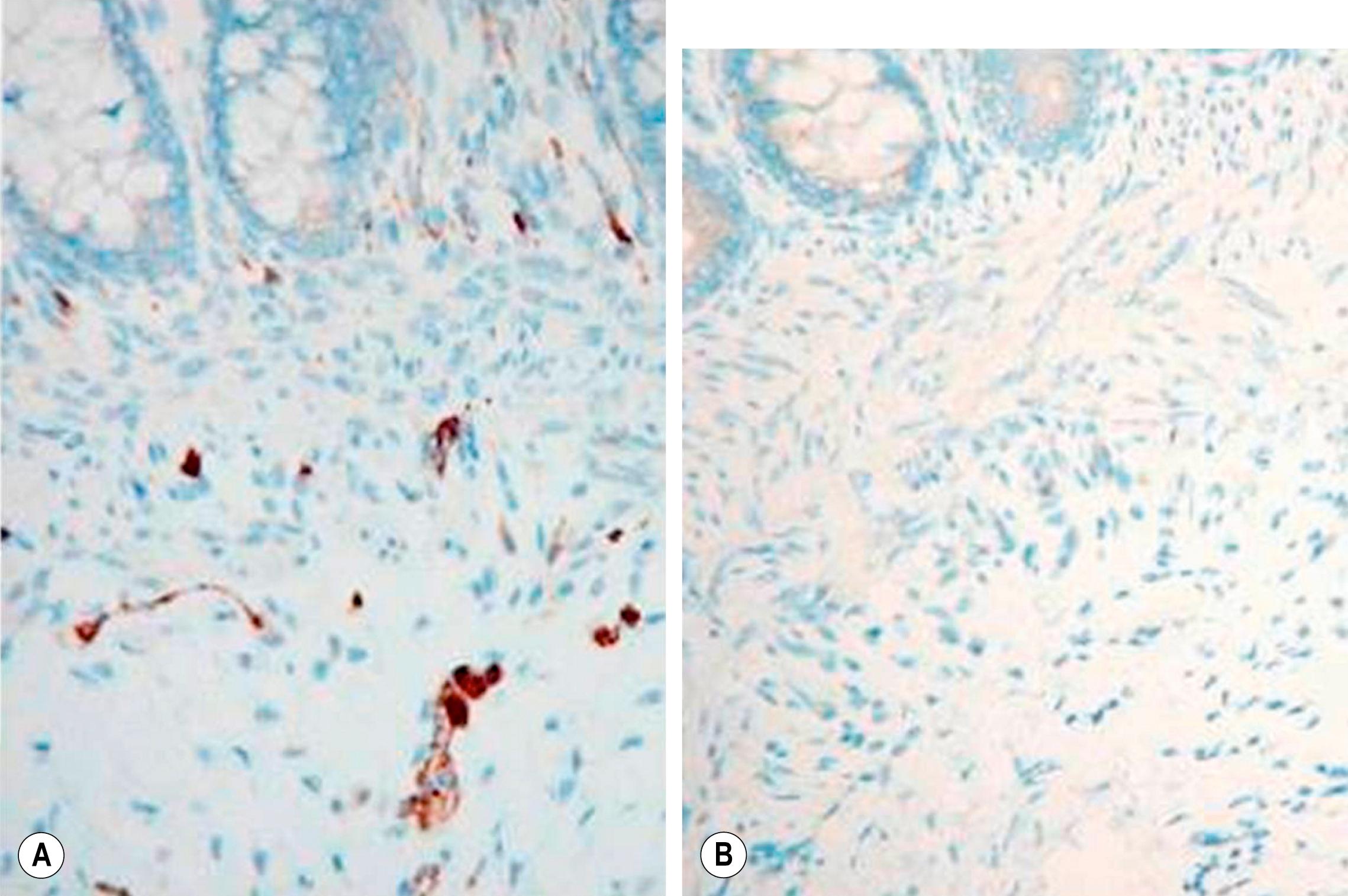
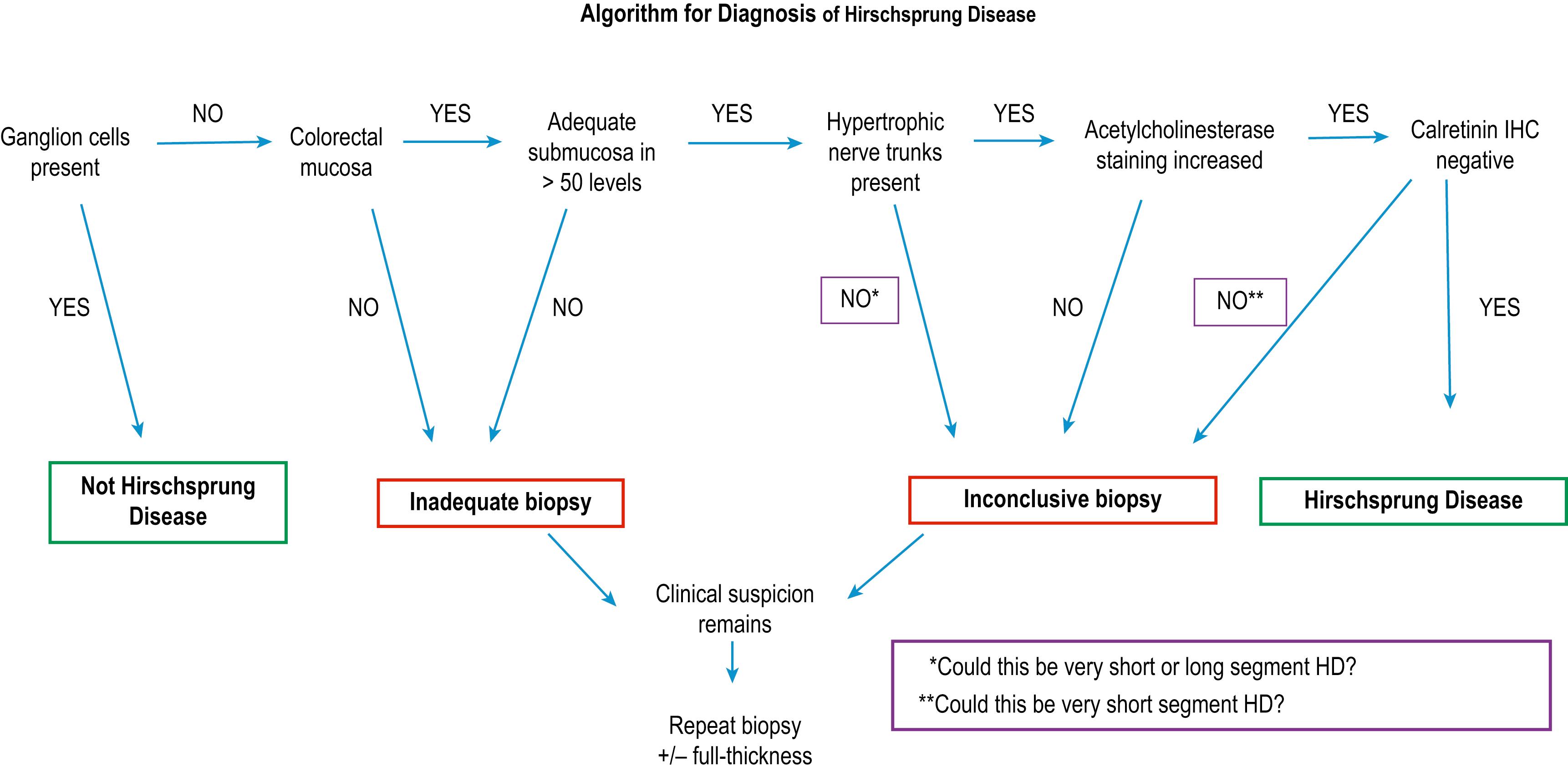
Once the diagnosis of HD is made, the child should be appropriately resuscitated with intravenous fluids and treated with broad-spectrum antibiotics, nasogastric drainage, and rectal decompression using rectal stimulation and/or irrigation. Patients with associated abnormalities such as cardiac disease or congenital central hypoventilation syndrome must be thoroughly evaluated prior to operative correction.
Once the infant or child has been resuscitated and stabilized, the operation can be done semi-electively. While waiting, many infants can be discharged home on breast milk or an elemental formula, in combination with rectal irrigations. All parents must be educated in the proper procedure for rectal irrigations and should be sent home with the necessary supplies as HAEC can be fatal during this waiting period. In the older child with an extremely dilated colon, pull-through should be delayed until the diameter of the colon has decreased sufficiently to perform a safe procedure. Weeks or months of irrigations may occasionally be needed. Some of these children may benefit from an initial colostomy to adequately decompress the dilated colon.
Some physicians have advocated nonoperative long-term management of short-segment HD using enemas and laxatives. Others have suggested that simple myectomy may be adequate. However, these approaches do not provide a good quality of life for most infants and children with HD, and most pediatric surgeons recommend a pull-through procedure even for short-segment disease.
The goals of surgical management for HD are to remove the aganglionic bowel and reconstruct the intestinal tract by bringing the normally innervated bowel down to the anus while preserving normal sphincter function. The most commonly performed operations are the Swenson, Duhamel, and Soave procedures, although a number of other operations, such as the Rehbein and State procedures, have been described and are still performed in some centers. As there are very few prospective studies comparing operations, the best operation for an individual patient is the one that the surgeon has been trained to do and does frequently.
Although Swenson’s operation was initially developed as a one-stage procedure, the relatively high incidence of stricture, leak, and other adverse outcomes led to the adoption of a routine preliminary colostomy, with definitive pull-through performed 3–12 months later. In the 1980s, a number of surgeons reported series of single-stage pull-through operations even in small infants. Over the following 10–15 years, many reports suggested that a one-stage approach was safe, avoided the morbidity of stomas in infants, and was more cost effective. However, a stoma may still be needed for infants and children with severe enterocolitis, perforation, malnutrition, or massively dilated proximal bowel, and in situations when it is not possible to reliably identify the transition zone on frozen section.
The goal of the Swenson pull-through is to remove the entire aganglionic colon, with an end-to-end anastomosis above the anal sphincter. The operation was originally performed via a laparotomy, with the anastomosis being performed from the perineum after everting the aganglionic rectum ( Fig. 34.8 ). It is important to keep the dissection in the correct plane along the rectal wall to avoid injury to the deep pelvic nerves, vessels, and other structures such as the vagina, prostate, vas deferens, and seminal vesicles. Despite the theoretical risks inherent in the deep pelvic dissection, long-term functional outcomes after the Swenson procedure are excellent.
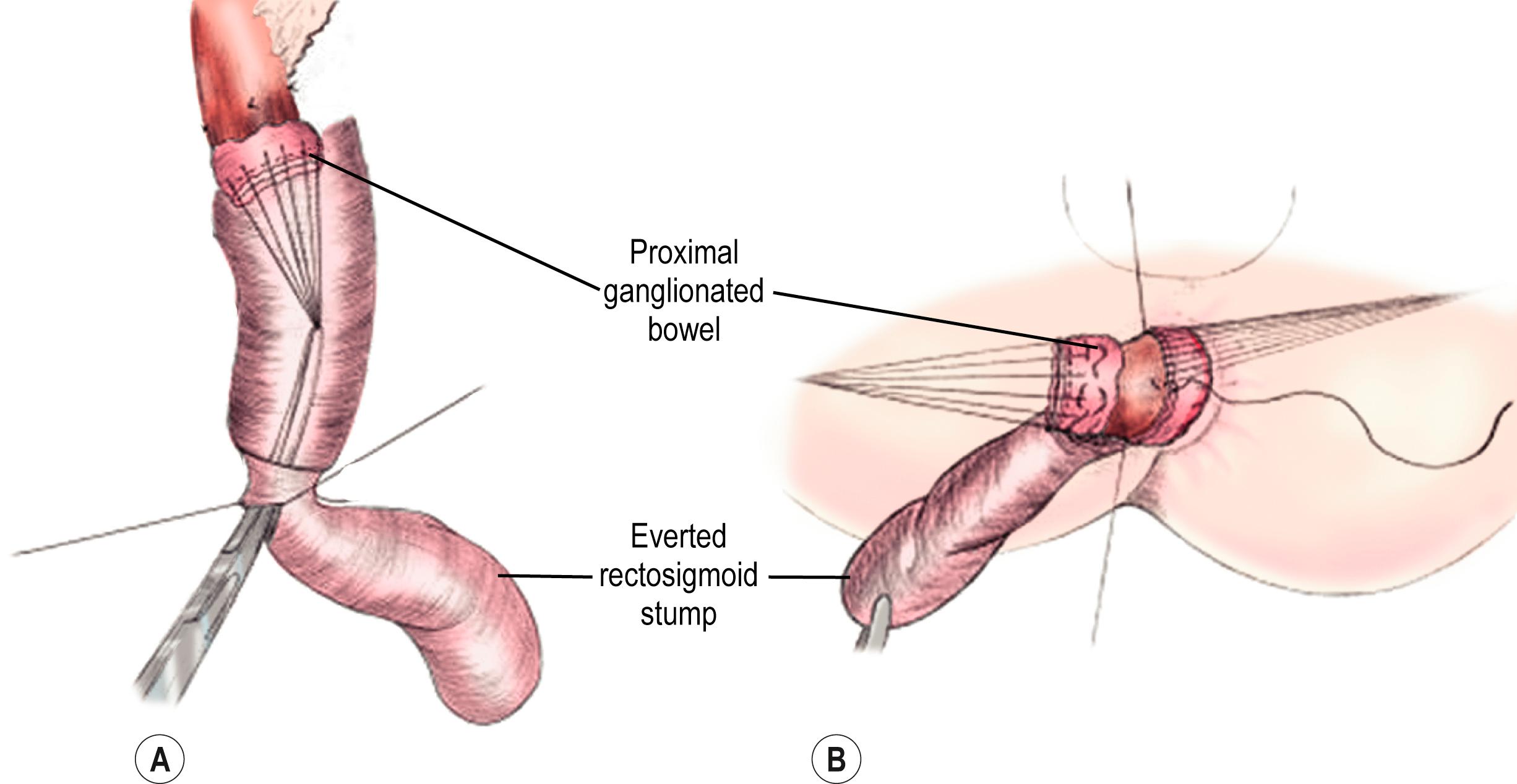
The Soave procedure, subsequently modified by Boley, was designed to avoid the risk of injury to important pelvic structures by performing a submucosal endorectal dissection and positioning the pull-through bowel within an aganglionic muscular “cuff” ( Fig. 34.9 ). Despite concerns by some that the Soave procedure may result in long-term constipation due to incomplete excision of the aganglionic rectum, most late follow-up studies have reported similar outcomes between the Soave and Swenson operations.
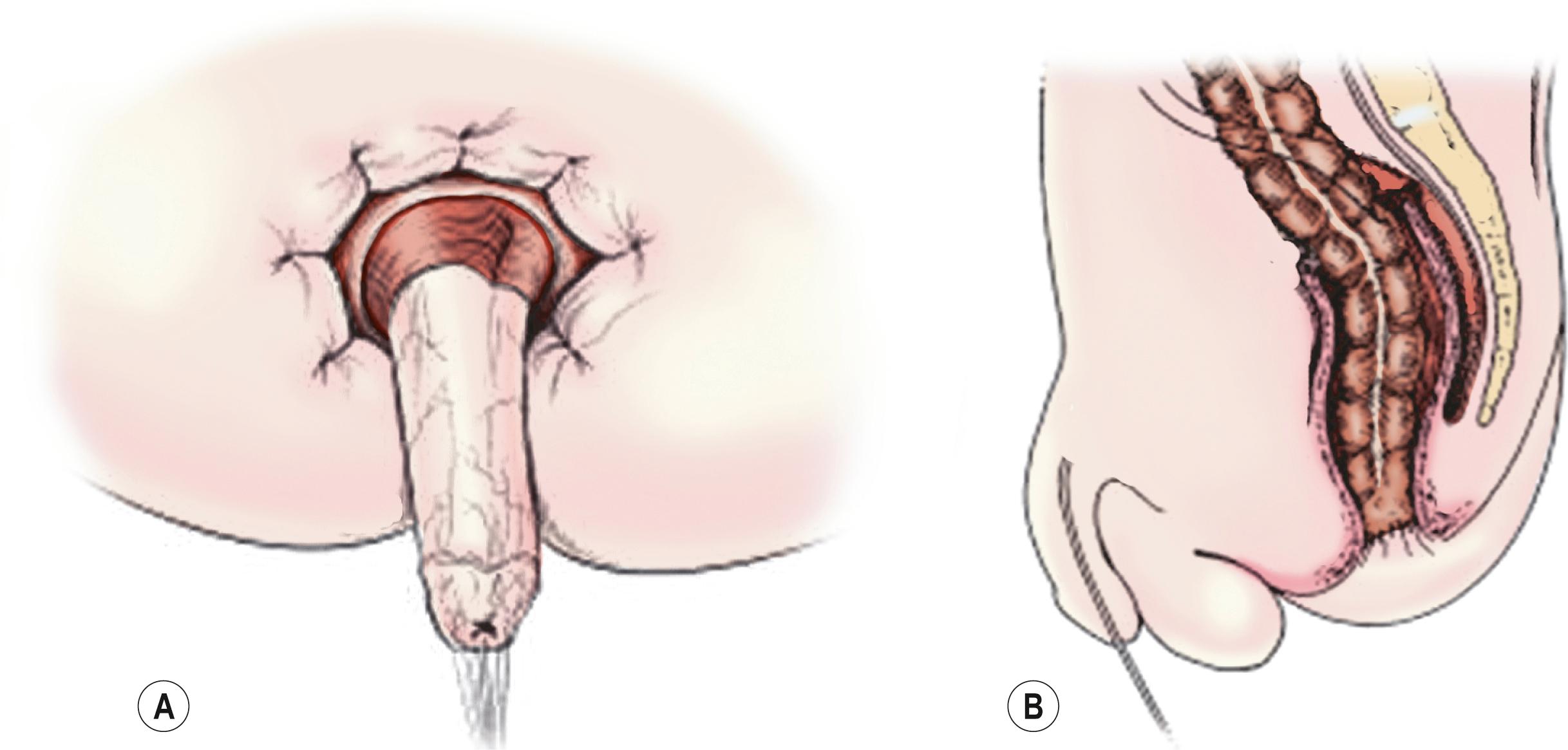
The Duhamel procedure involves bringing the normal colon down through the bloodless plane between the rectum and sacrum, and joining the two walls with a linear stapler to create a new lumen that is aganglionic anteriorly and normally innervated posteriorly ( Fig. 34.10 ). The Duhamel operation is felt by many surgeons to be easier and safer than the Swenson or Soave procedures. Also, it results in a very large anastomosis, which reduces the risk of stricture. Reported long-term results of the Duhamel procedure have been similar to those with the other two operations, although recent studies suggest that outcomes from the Duhamel procedure are inferior to those of the transanal pull-through.
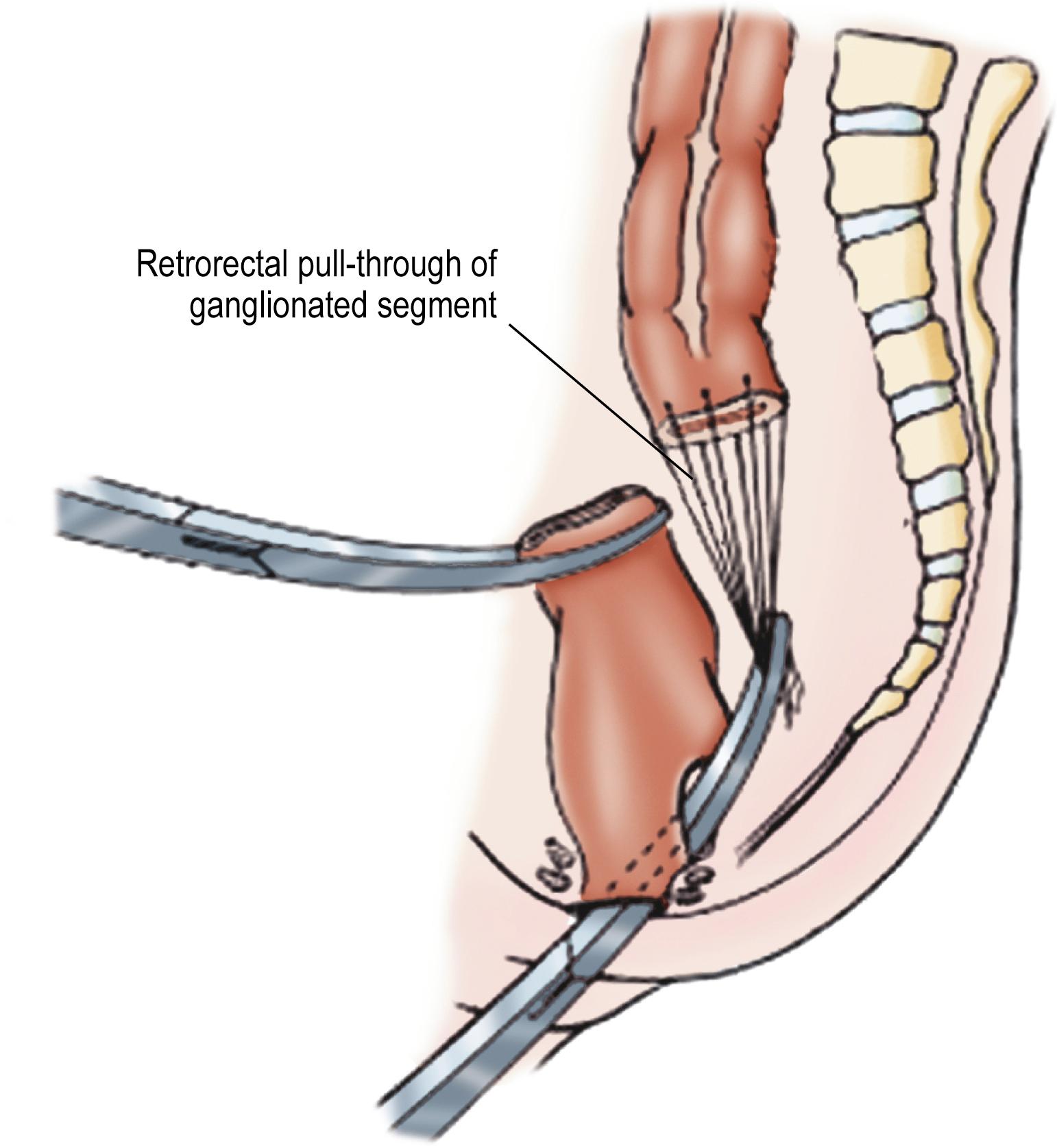
Georgeson first described the laparoscopic approach for HD in 1995. With this technique, a biopsy is initially performed to identify the transition zone, the rectum is mobilized below the peritoneal reflection, and a short mucosal dissection is performed through a perineal approach ( Figs. 34.11–34.15 ). The rectum is then prolapsed through the anus and the anastomosis performed from below. This procedure is associated with a shorter time in the hospital, and both early and mid-term results appear to be equivalent to those reported for the other procedures. Laparoscopic approaches have been also described for the Duhamel and Swenson operations with excellent short-term results.
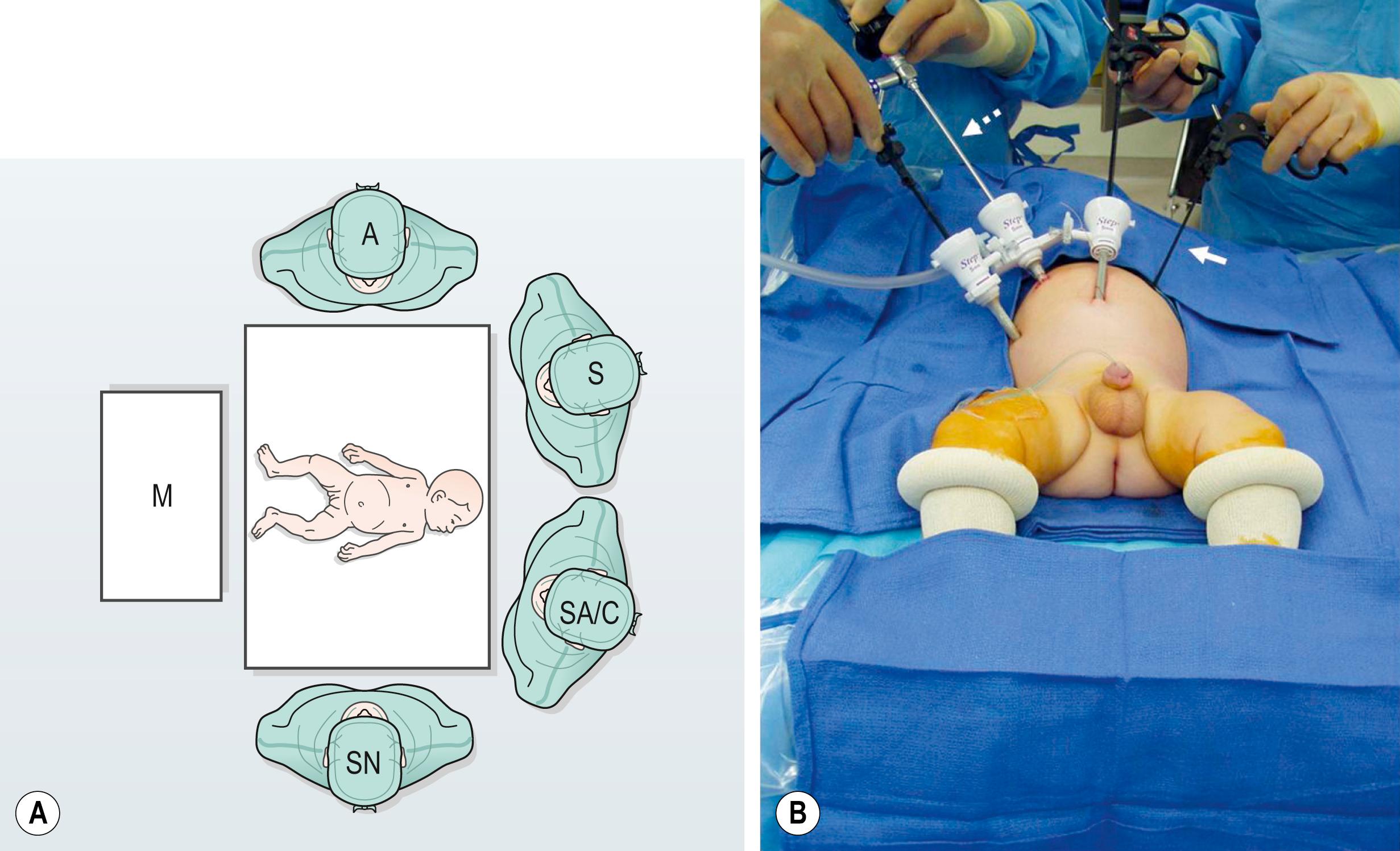
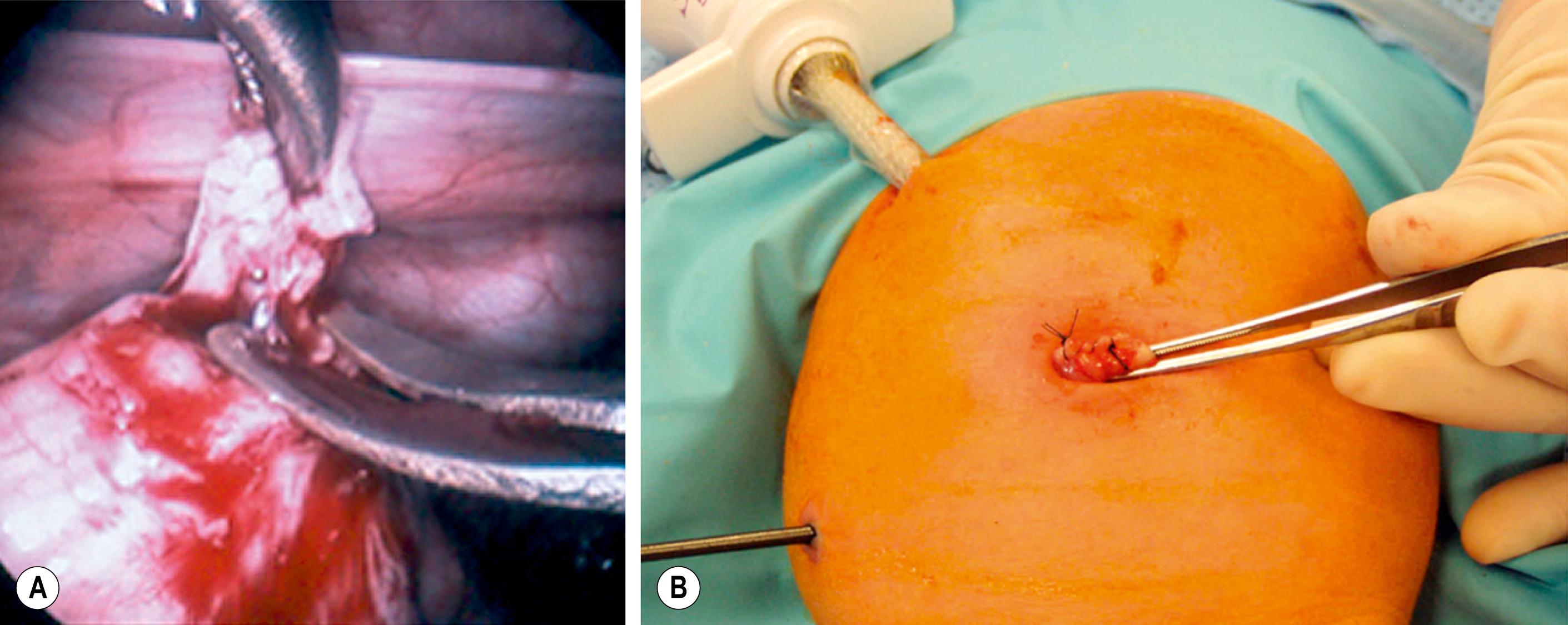
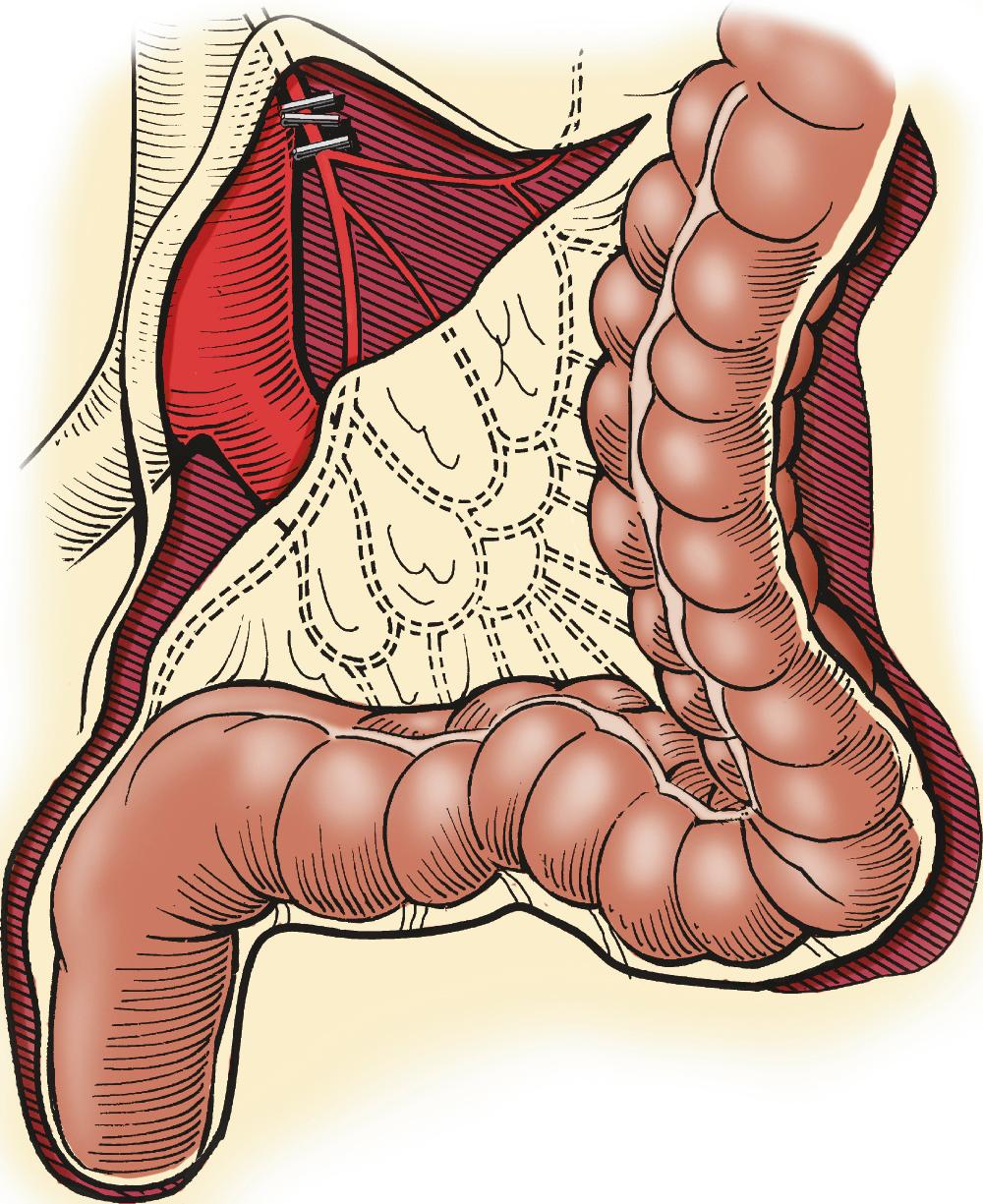
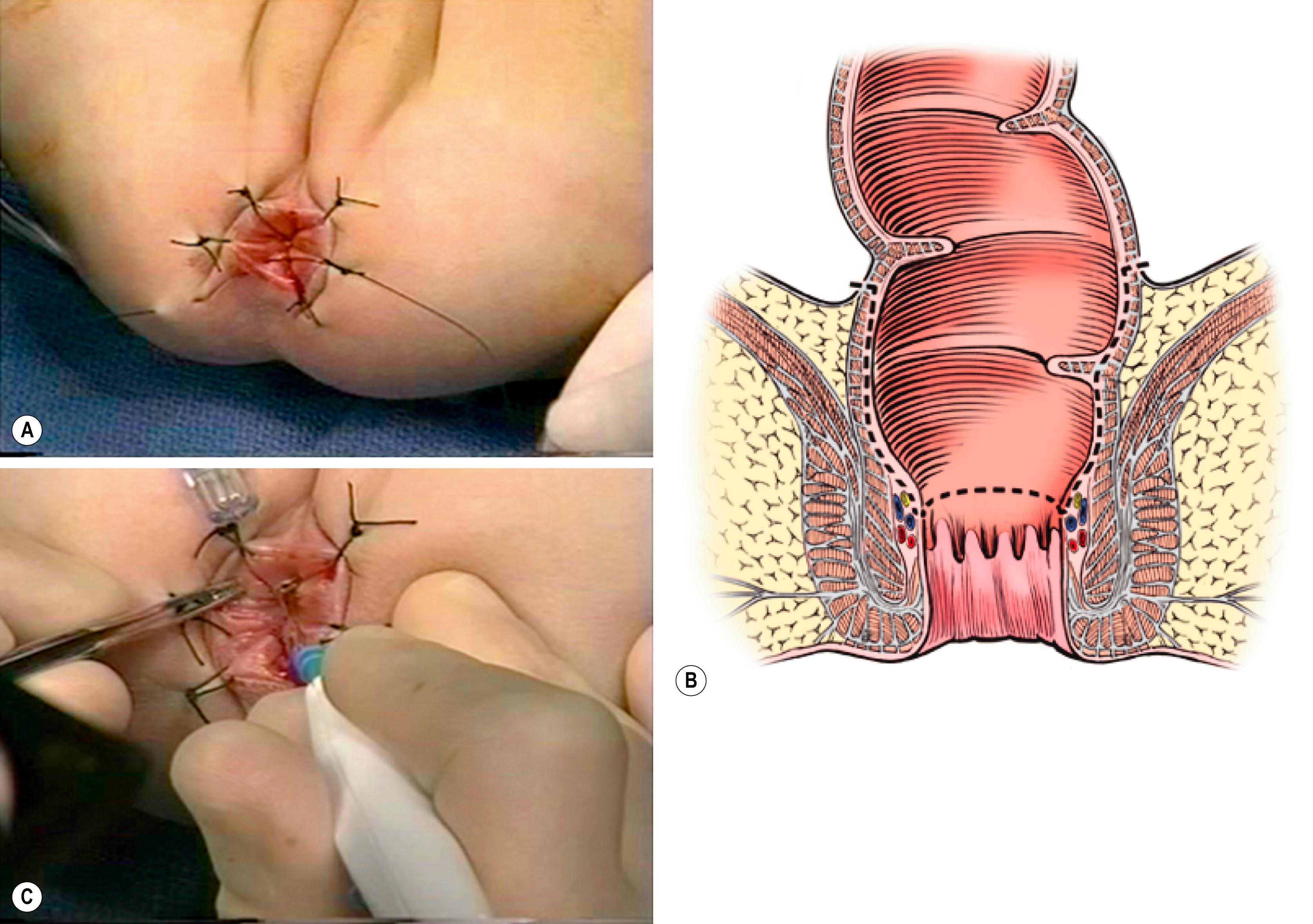
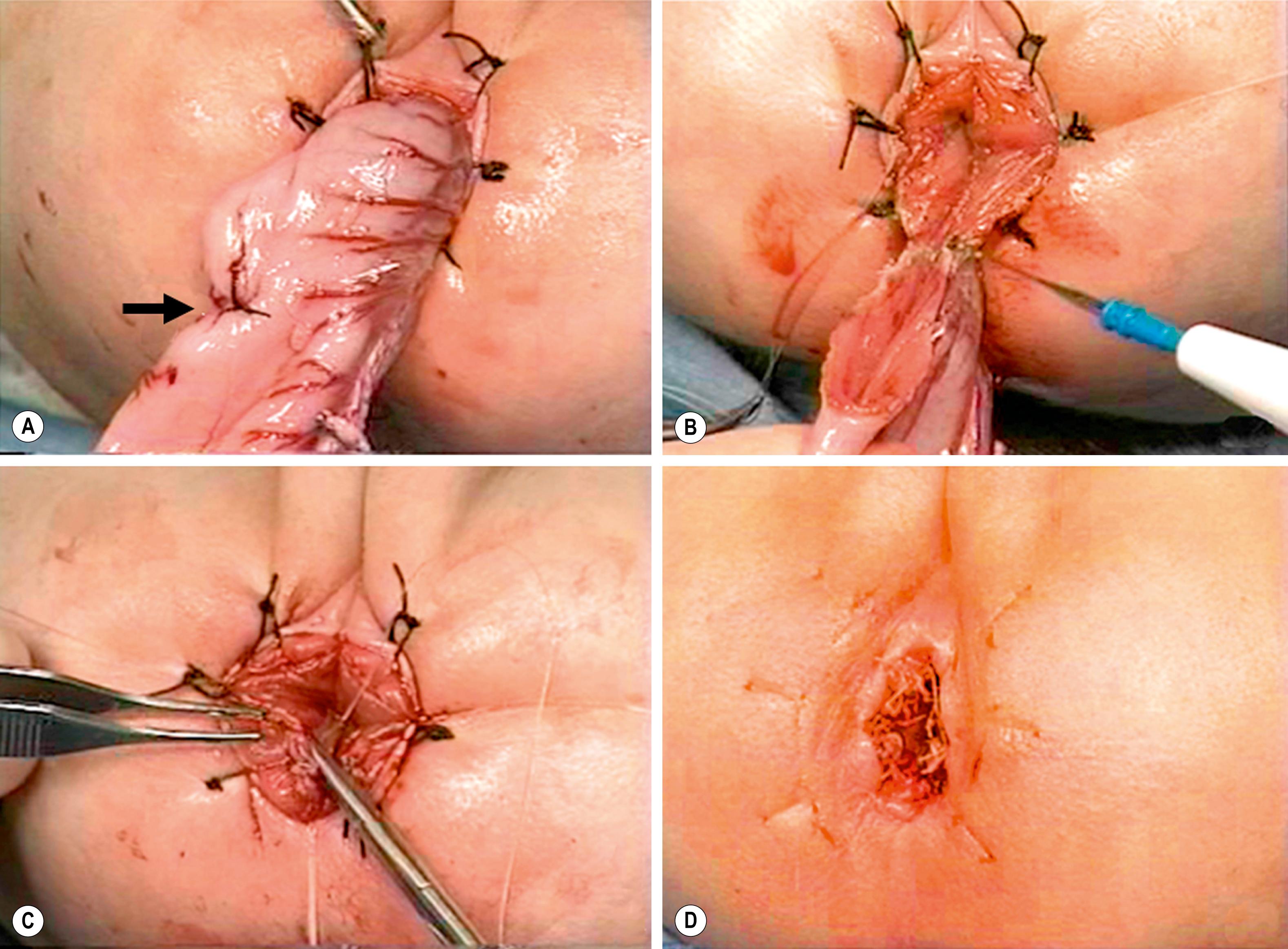
Become a Clinical Tree membership for Full access and enjoy Unlimited articles
If you are a member. Log in here